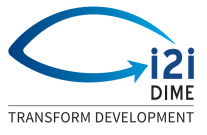Difference between revisions of "Propensity Score Matching"
Maria jones (talk | contribs) |
Maria jones (talk | contribs) |
||
| Line 23: | Line 23: | ||
== Additional Resources == | == Additional Resources == | ||
[[Category: Impact Evaluation Design]] | |||
Revision as of 17:12, 7 February 2017
NOTE: this article is only a stub. Please add content!
Propensity Score Matching(PSM) is a quasi-experimental impact evaluation technique which attempts to estimate the effects of a treatment by matching control group participants to treatment group participants based on propensity score(predicted probability of participation based on observed characteristics). This is done to reduce the selection bias that may be present in non-experimental data.
Read First
- The efficacy of a PSM design depends mostly on how well the observed characters determine program participation. If the bias from unobserved characteristics are likely to be very small, PSM provides us with good estimates and if the bias from unobserved characteristics are large, then the estimates from the PSM can be sizably biased.
Examples of Studies using Propensity Score Matching
Here are some of the examples of impact evaluation journal articles using Propensity score matching:
Back to Parent
This article is part of the topic Impact Evaluation Design.
